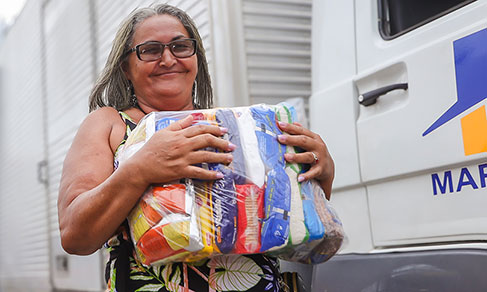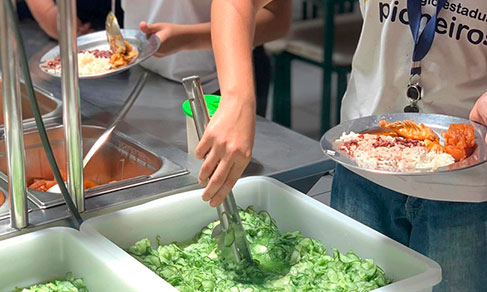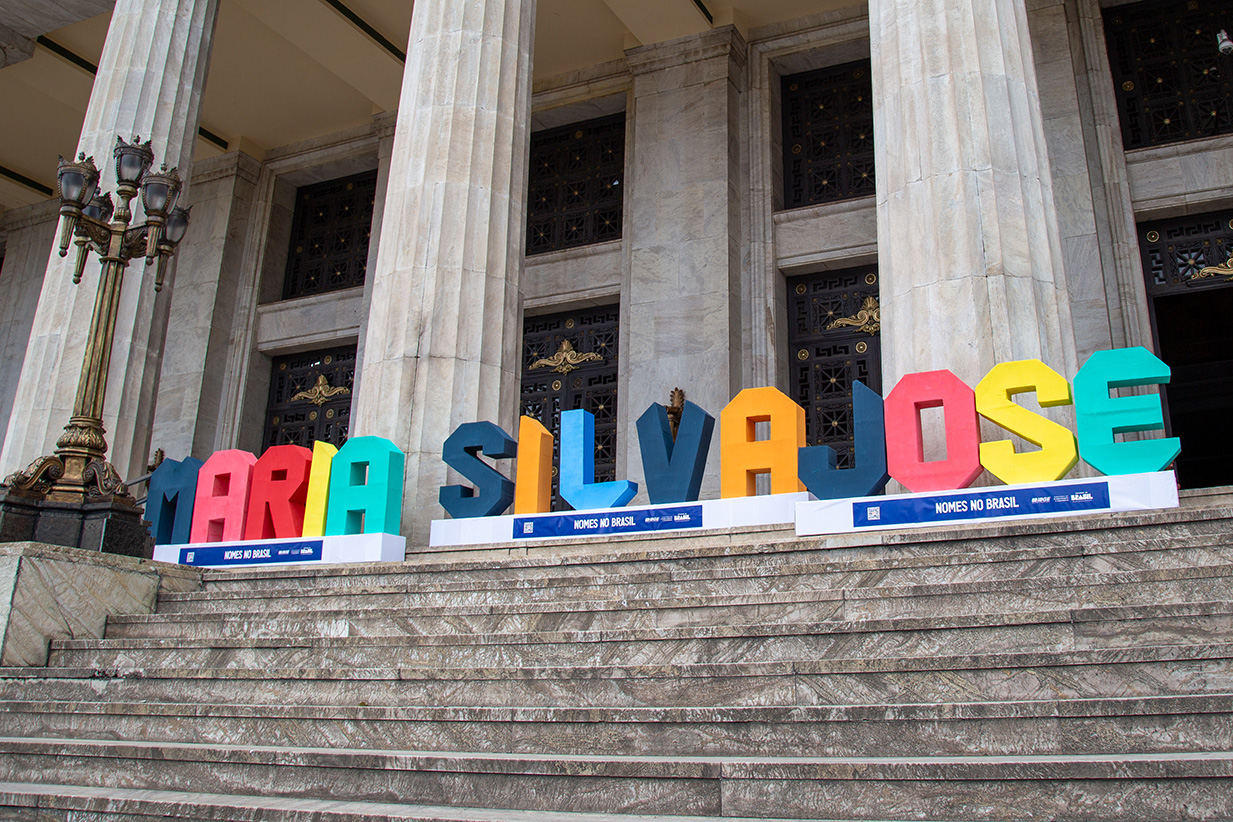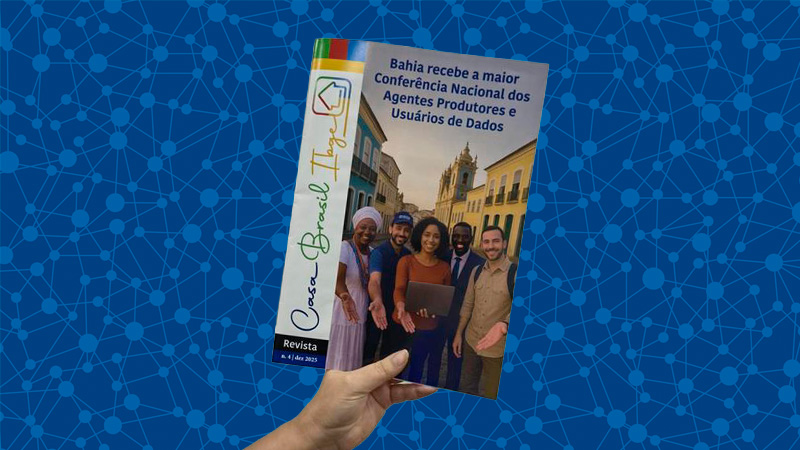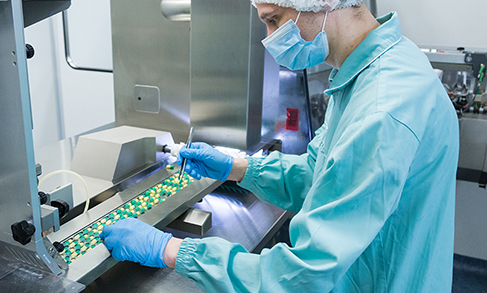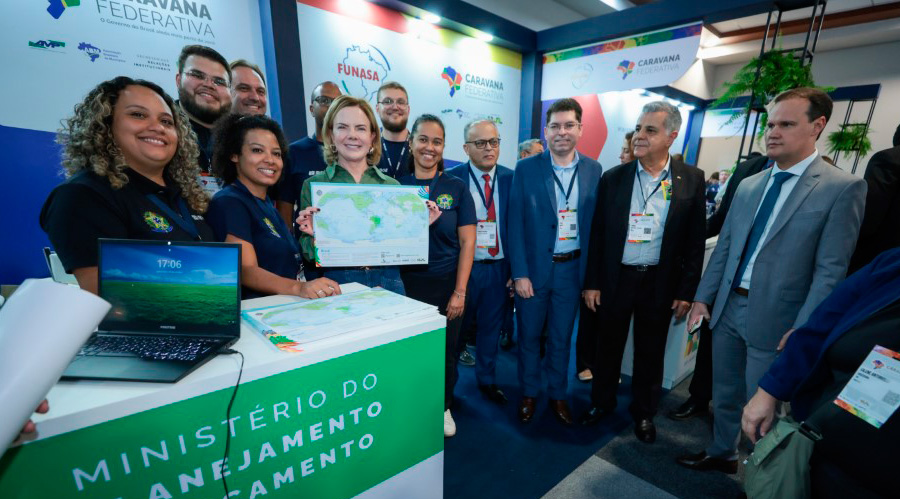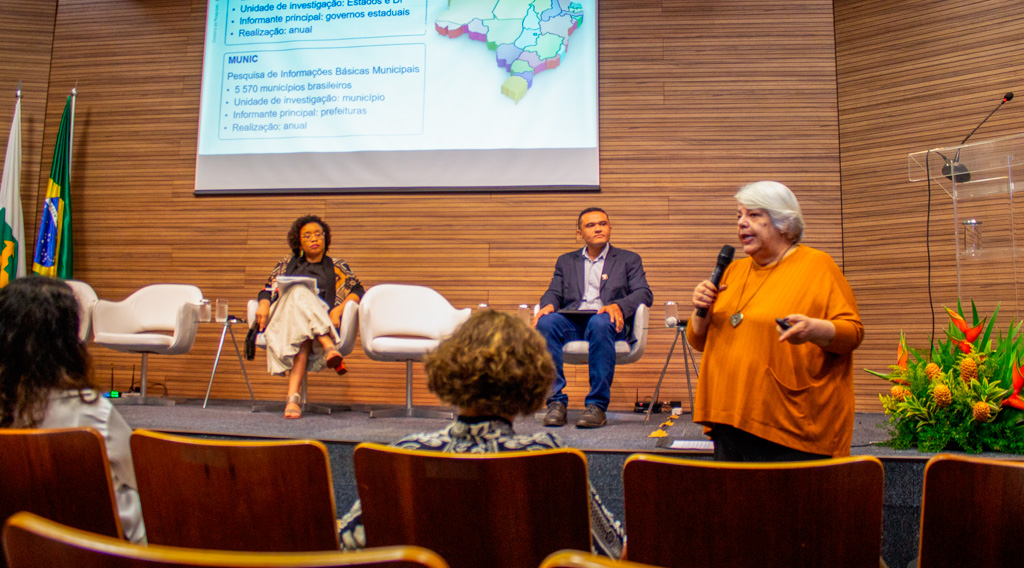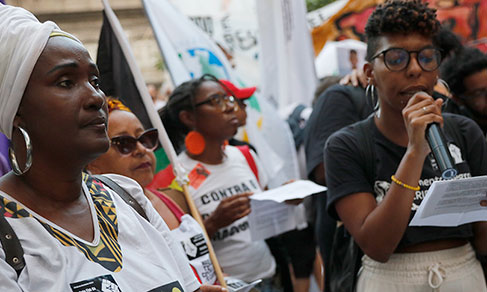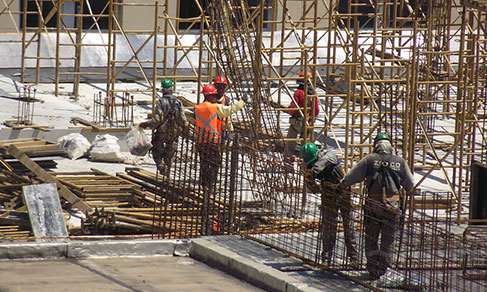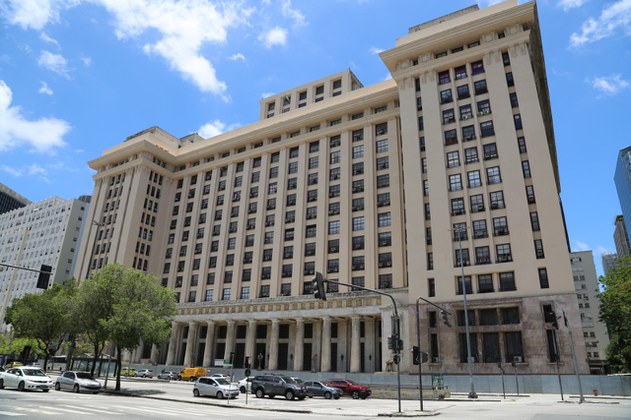Perfil dos Estados e Municípios
Most states and municipalities distribute food baskets and meals
November 07, 2025 10h00 AM | Last Updated: November 08, 2025 11h13 PM
Highlights
- 24 Federation Units and 3,985 municipalities informed that, in the year 2023, they carried out some action aimed at the promotion of access to food in the preceding year, such as distribution of basic food baskets, ready-to-eat meals or meal vouchers.
- 12 states and 4,363 municipalities provided, in 2023, the complementary Occasional Social Assistance Benefit to the population facing food and nutritional insecurity, such as basic food baskets, food in their natural state and monetary benefits.
- 24 states and 3,040 municipalities acquired, in the year 2023, family farming products by means if the Food Acquisition Program (PAA).
- 22 states and 4,303 municipalities acquired, in 2023, family farming program by means of the National School Feeding Program (PNAE).
- 18 states and 1,699 municipalities, in 2023, used financial and material resources to support urban agriculture practices such as school vegetable gardens, community vegetable gardens, production of inputs and production of medicinal herbs.
- The presence of farmers’ markets reached 3,961 (71.5%) municipalities, with a total of 9,232 farmers’ markets.
- 15 Federation Units reported the existence of 479 food kitchens managed by the state government. Only 3.8% of the municipalities (212) reported the existence of 329 food kitchens managed by the municipal government.
- Community kitchens were found in 5 Federation Units, amounting to 111 community kitchens managed by the state, and 283 municipalities reported the existence of 489 community kitchens, being 47.6% of them managed by the municipal government exclusively.
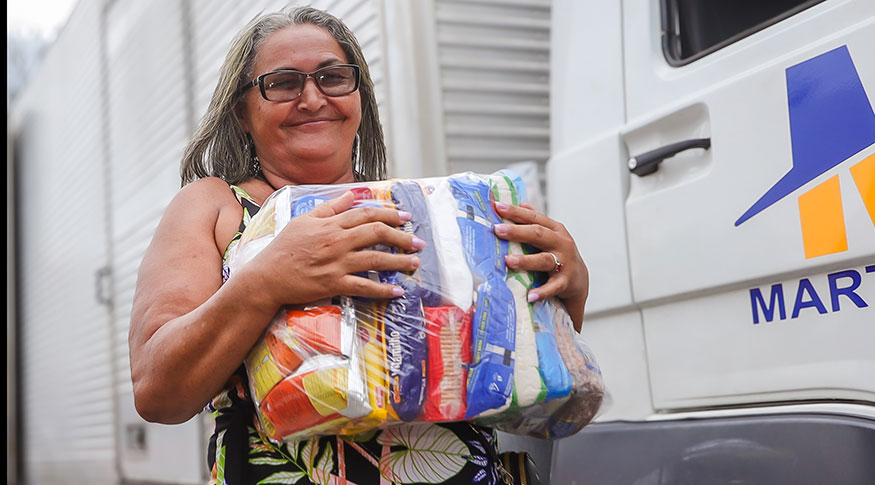
Em 2024, 24 Federation Units (FU) reported having carried out, in 2023, some type of action aimed at the promotion of access to food. The majority (21) was engaged in the distribution of food baskets, followed by the supply of ready-to-eat meals (17). Other FUs reported the supply of meal vouchers (3). Amazonas was the only state to report all the actions surveyed.
As for the municipalities, 71.9% (3,985) developed to promote the access of the population to food. Among these, the biggest proportion (94.6% or 3,770 municipalities) distributed food baskets. Others, 6.2% (249), provided meals vouchers.
These data can be found in the Food and Nutritional Security supplement to the Survey of Basic Municipal Information and the Survey of Basic State Information (Munic and Estadic) 2024, released today (7) by the IBGE. Read also the news on management and legislation relative to food and nutritional security in the states and municipalities.
According to Vânia Pacheco, Manager of Social Studies and Surveys of the Division of Population and Social Indicators (Copis), the data are valuable for one to understand how food and nutritional security directorate and strategies can have an impact on the lives of citizens. “This understanding adds to the strengthening of resilience of vulnerable populations before economic, sanitary and environmental crises. At the same time, it allows the identification of gaps and challenges that still remain to the universalization of the right to food.”
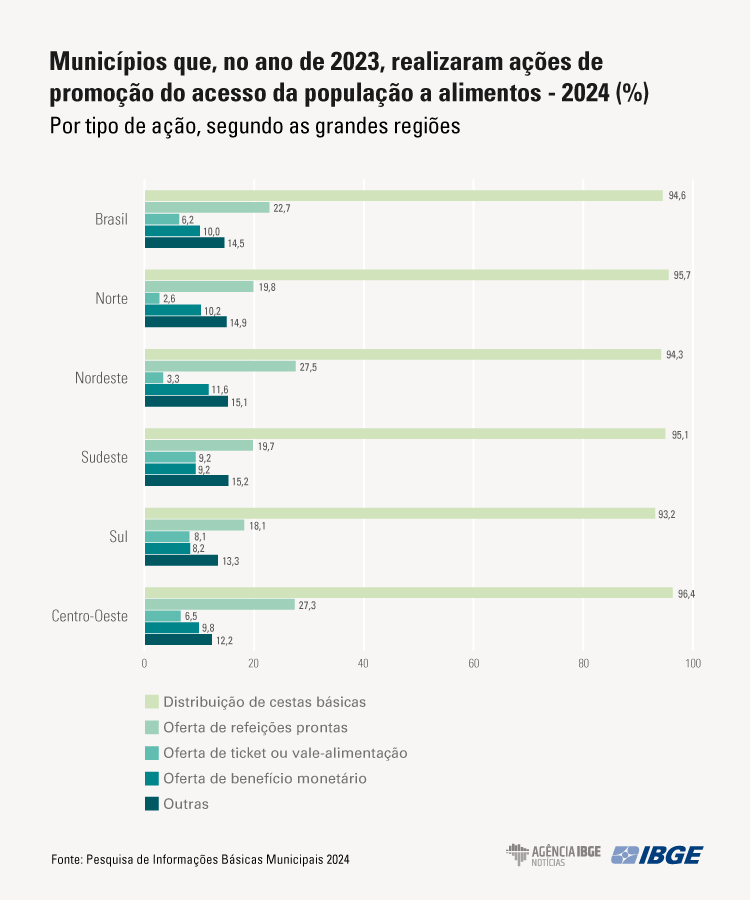
The survey investigated actions for the promotion of access to food, carried out in 2023, aimed at specific groups, such as the homeless population, Indigenous persons, Quilombolas, gypsies, other traditional peoples and communities, foreign immigrants, waste pickers and others. Of the 24 Federation Units that had some type of action, only Rio Grande do Norte reported not benefiting specific groups. Except for Maranhão, Rio de Janeiro and Mato Grosso do Sul, all the others assisted users of the social assistance network (Basic and/or Special Social Protection) and only 5 benefited gypsies. The only state where actions assisted all the specific groups investigated was Pernambuco.
Of the 3,985 municipalities that developed actions to promote access of the population to food, 91.2% (3,636) informed that the actions benefited specific population groups. The biggest proportions assisted users of the social assistance network. The municipalities with more than 500 thousand residents have the biggest proportion of those benefiting Quilombolas (26,1%), gypsies (10.9%), other traditional peoples and communities (28.3%) and waste pickers (28.3%). The North Region had the biggest proportion of municipalities assisting the Indigenous population (21.8%), other traditional peoples and communities (13.4%) and waste pickers (13.4%); in the Northeast, Quilombolas (21.3%); in the Southeast, users of the social assistance network in associate entities (28.4%) and, in the Central West, the homeless population (43.7%), gypsies (9.1%) and foreign immigrants (14.3%).
In 2023, 78.7% of the municipalities provided temporary benefits to the population
In 2023, 12 states provided complementary Occasional Social Assistance Benefits to the population facing food and nutritional food insecurity. This is an exceptional and temporary type of benefit, aimed at the supply of immediate needs and calamity or emergency situations. “It can help mitigate one of the main determiners of food insecurity; the temporary difficulty to obtain food,” Vânia Pacheco explains.
As for the supply of the benefits, eight Federation Units provided food baskets; five, food in their natural state; and six, monetary benefits. In Ceará and in the Federal District, the three types of benefits were offered.
Among the municipalities, 78.7% (4,363) provided the benefit. The North Region and Sergipe were the ones reporting the biggest proportions: respectively, 81.4% (359) and 93.3% (70). As for the type of benefit, 95.3% (4,157) provided food baskets, whereas 11.5% (974) provided monetary benefits.
To provide the population with food products, 24 states and 54.9% of municipalities acquired family farming products in 2023
The Food Acquisition Program (PAA) uses resources to buy food products from family farmers and directs them to families facing food insecurity, social assistance networks, public schools, healthcare units, socio-educational detention units and prisons. In 2023, 24 states and 54.9% of the municipalities acquired family farming products by means of the PAA. The biggest proportion of municipalities (81.1%) directed their acquisition to the social assistance network, including Cras and Creas, and the smallest, 0.8% (24), to public markets, grocery stores or public greengrocers.
Considering the school environment, the National School Feeding Program (Pnae) has directed resources for the acquisition of food products from family farming. In 2023, 22 states and 77.7% of the municipalities acquired family farming products by means of Pnae. The South Region or Paraná had the biggest proportion of municipalities that adopted this type of action, respectively, 83.5% (989) and 85.6% (338).
Only 10 Federation Units have policies to regulate the trade of food in school cafeterias
Actions for regulation of access and trade of food products were present in 16 Federation Units in 2024. Among the actions, that of regulation of food trade in schools (cafeterias) was observed in the biggest number of Federation Units (10), followed by sanitary regulation to favor the trade of regional products or at a small scale (8).
At municipal level, 30.6% (1,694) developed actions for regulation of access and trade of food in 2024. The higher the size range of the population, the bigger the proportion of municipalities carrying out such actions, reaching 60.4% (29) of those with more than 500 thousand residents. Among the types of regulation, sanitary regulation and trade of food in school cafeterias were the highlights, being developed by, respectively, 55.4% (915) and 50.2% (850) of municipalities. Regulation of food trade close to schools (street vendors) was found in 25.3% (429) of municipalities.
In 2023, 30.7% of municipalities directed resources to support urban agriculture
In 2023, 18 states and 30.7% (1,699) of municipalities used financial and/or material resources to support urban agriculture practices, such as school vegetable gardens, community vegetable gardens, production of inputs and production of medicinal herbs.
As for the form of support, 16 Federation Units provided technical assistance or training; 13 provided tools or supported the purchase of tools, technology or seeds; 7 bought products produced by urban agricultural producers; 2 provided or supported the purchase of water and/or electricity; 3 distributed, financed or supported the purchase of land for planting in urban areas and 1 provided another form of support.
In the municipal administration, as for the form of support, 53.7% provided or supported the purchase of tools, technology or seeds and 54.6% provided technical assistance or training. “the agricultural production of green vegetables, fruits and medicinal plants, for example, and husbandry of small animals in urban spaces are an important sustainable activity, which promotes the reduction of costs with transportation and the subsequent decrease of polluting agents, besides offering fresh, nutritious and herbicide-free," Vânia Pacheco remarks.
Brazil has 2.3 thousand public markets and more than 9 thousand farmers’ markets
The survey investigated the existence of facilities such as public markets, grocery stores or public greengrocers, food kitchens, community kitchens, food banks and family farming supply centers. Among municipalities, that also includes farmers’ markets.
In 2024, there were public markets in five states and in 1,624 (29.3%) municipalities. In only one Federation Unit (São Paulo) there was a greengrocer or grocery store, as well as in 27 municipalities (0.5%). Nevertheless, farmers’ markets totaled 9,232 in 3,961 (71.5%) municipalities. Of the 2,323 public markets, the majority (94.9%) was under the exclusive responsibility of the municipality.
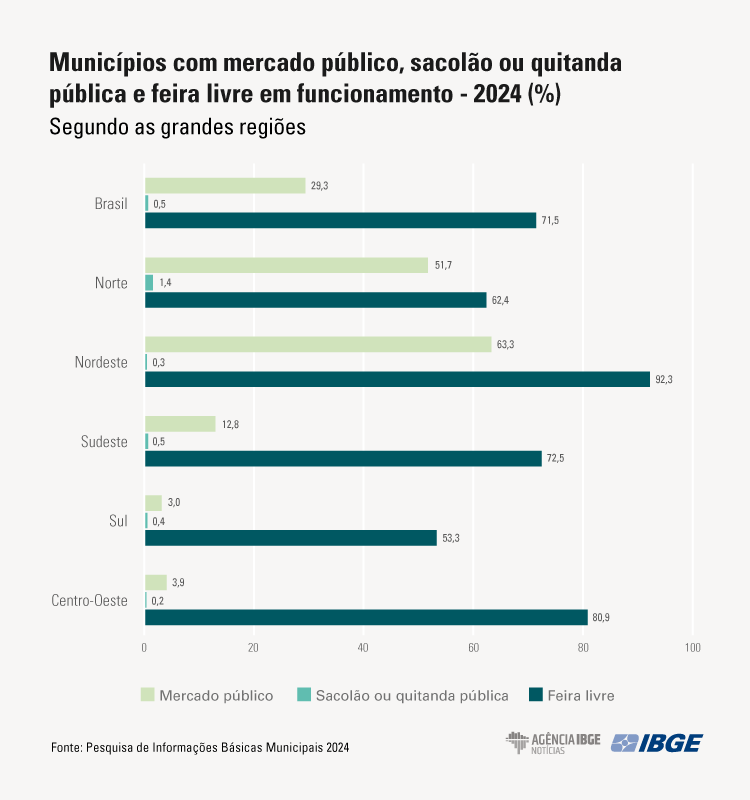
In 2024, 15 Federation Units reported the existence of 479 food kitchens under state management, all operating at least five days a week. Only 3.8% of municipalities (212) reported the existence of 329 food kitchens under municipal management.
Community kitchens were present in 5 states, totaling 111 under state management, all with a responsible technical professional, operating at least five days a week and serving one meal a day. As for municipalities, 5.1% (283) reported the existence of 489 community kitchens, with 47.6% of them under the exclusive responsibility of the municipal government; 69.9% (342) operated five days a week; and 86.1% (421) served one meal a day.
Munic/Estadic also investigated the presence of food banks – physical structures that receive donations from the private and/or public sectors and redistribute them free of charge to social assistance entities, food kitchens, community kitchens, and other public food and nutritional security facilities. In 2024, 8 states reported the existence of 12 food banks under state management, all of which had a technical professional responsible for the kitchen and monitored by civil society. Except for Pará, all the states had a food bank operating at least five days a week. Regarding municipalities, 4.1% (226) reported the existence of 229 food banks under municipal resposibility; 84.7% (194) were the exclusive responsibility of the municipality, 70.7% (162) operated five days a week, 61.1% (138) had monitoring and/or evaluation by some civil society council, and 68.6% (155) had a responsible technical professional.
About the survey
The Food and Nutrition Security supplement of the 2024 Survey of Basic Municipal (Munic) and State (Estadic) Information provides information on the management of public food and nutrition security policy, with data on legislation, management and participation instruments, actions and food and nutrition security facilities in states and municipalities.


